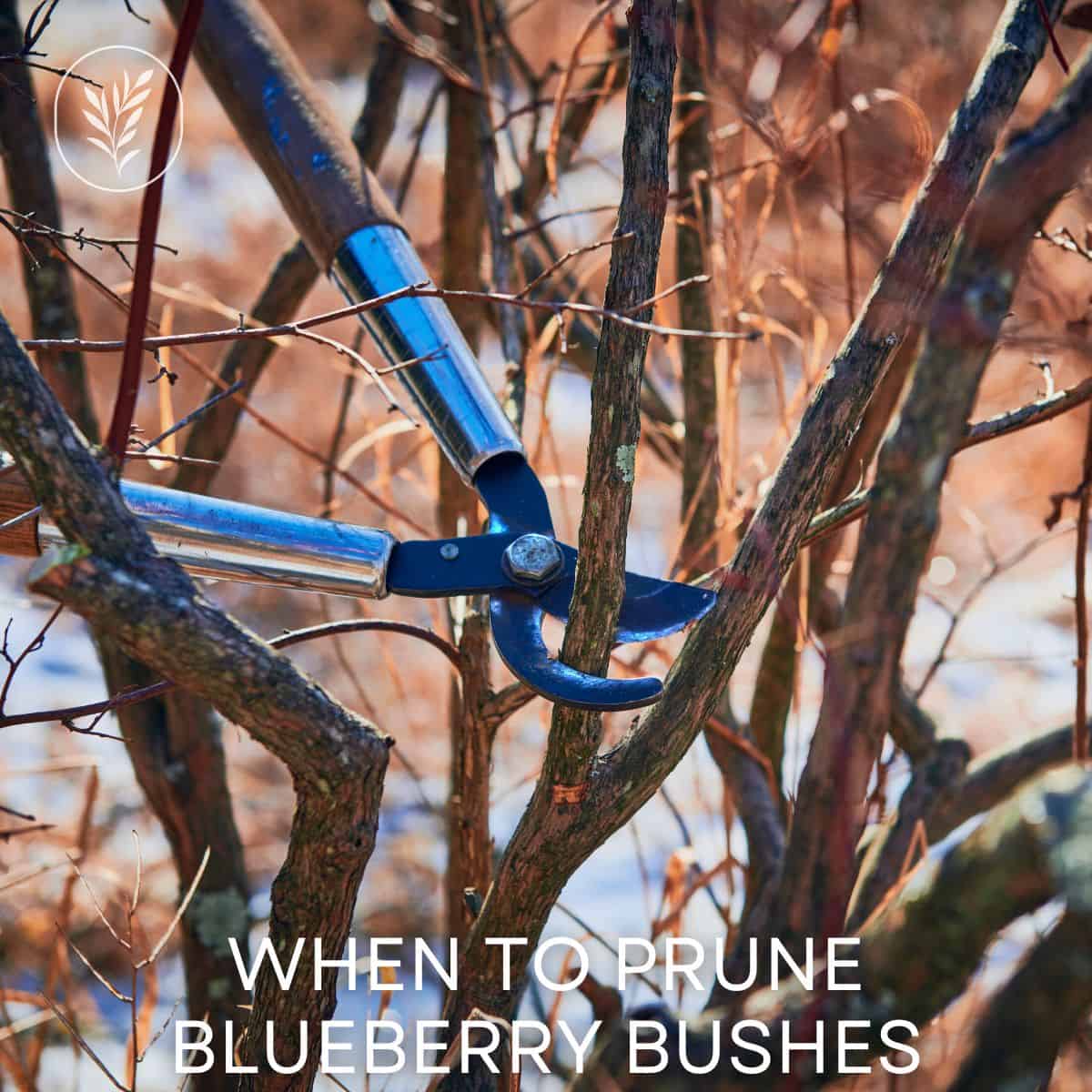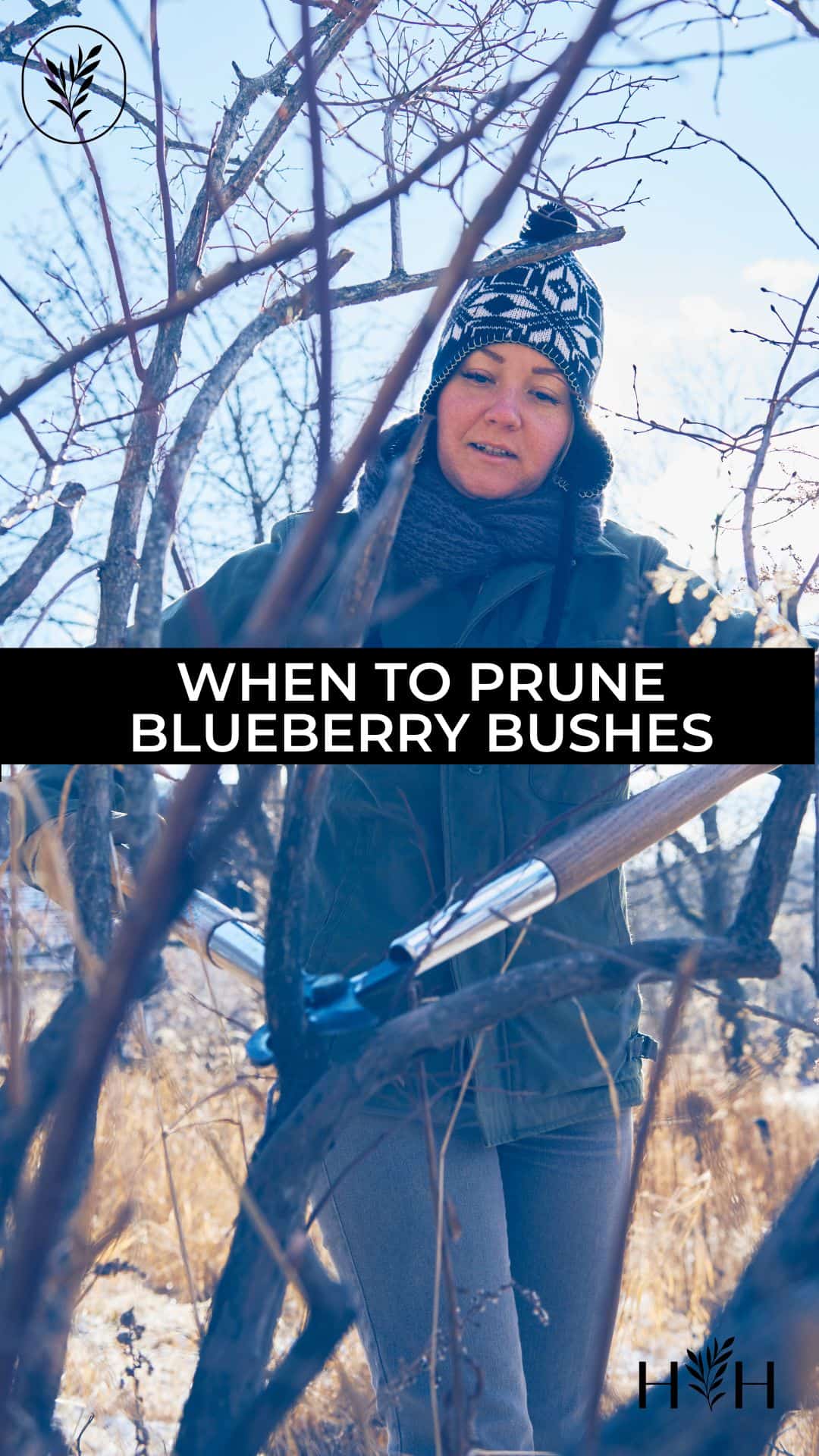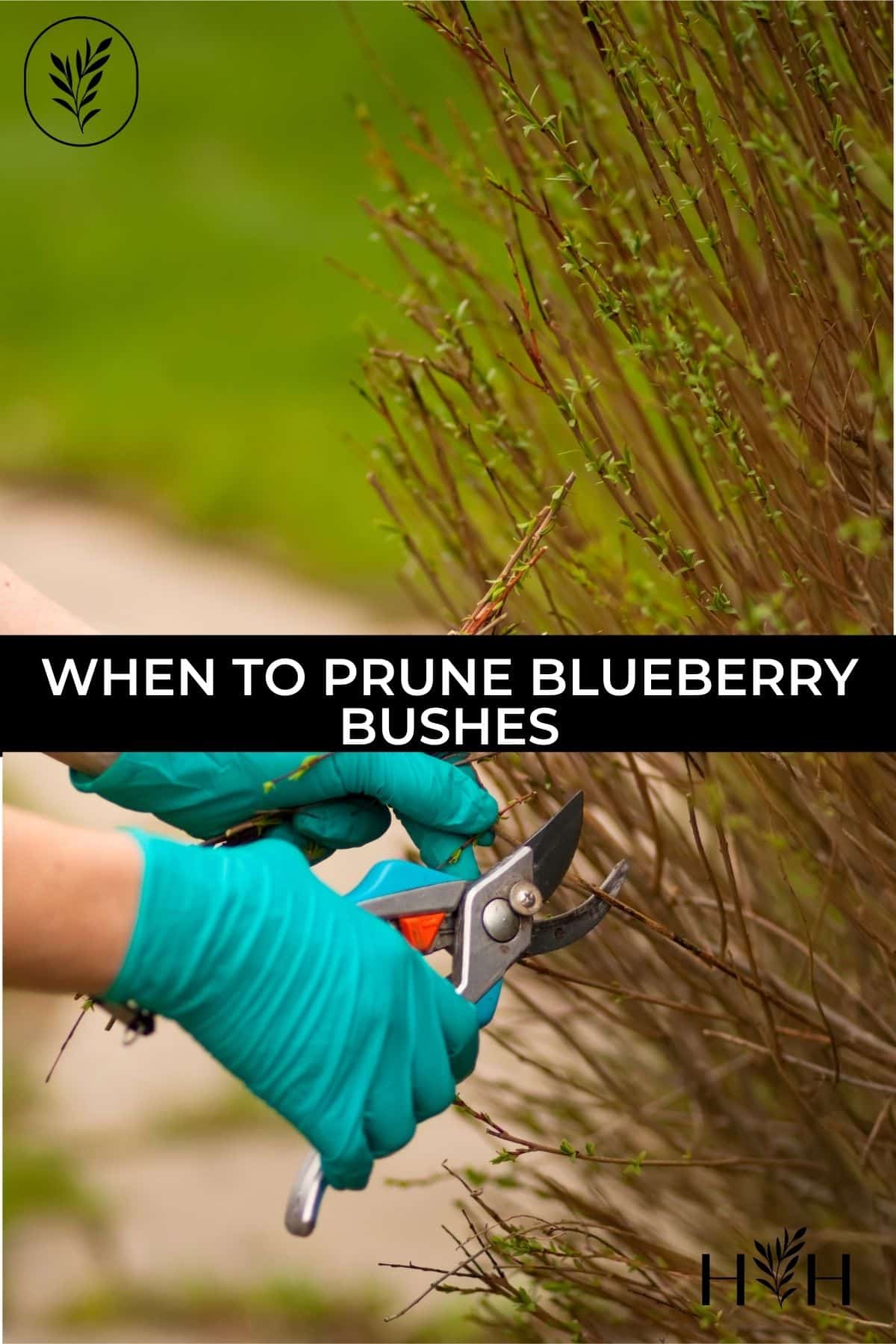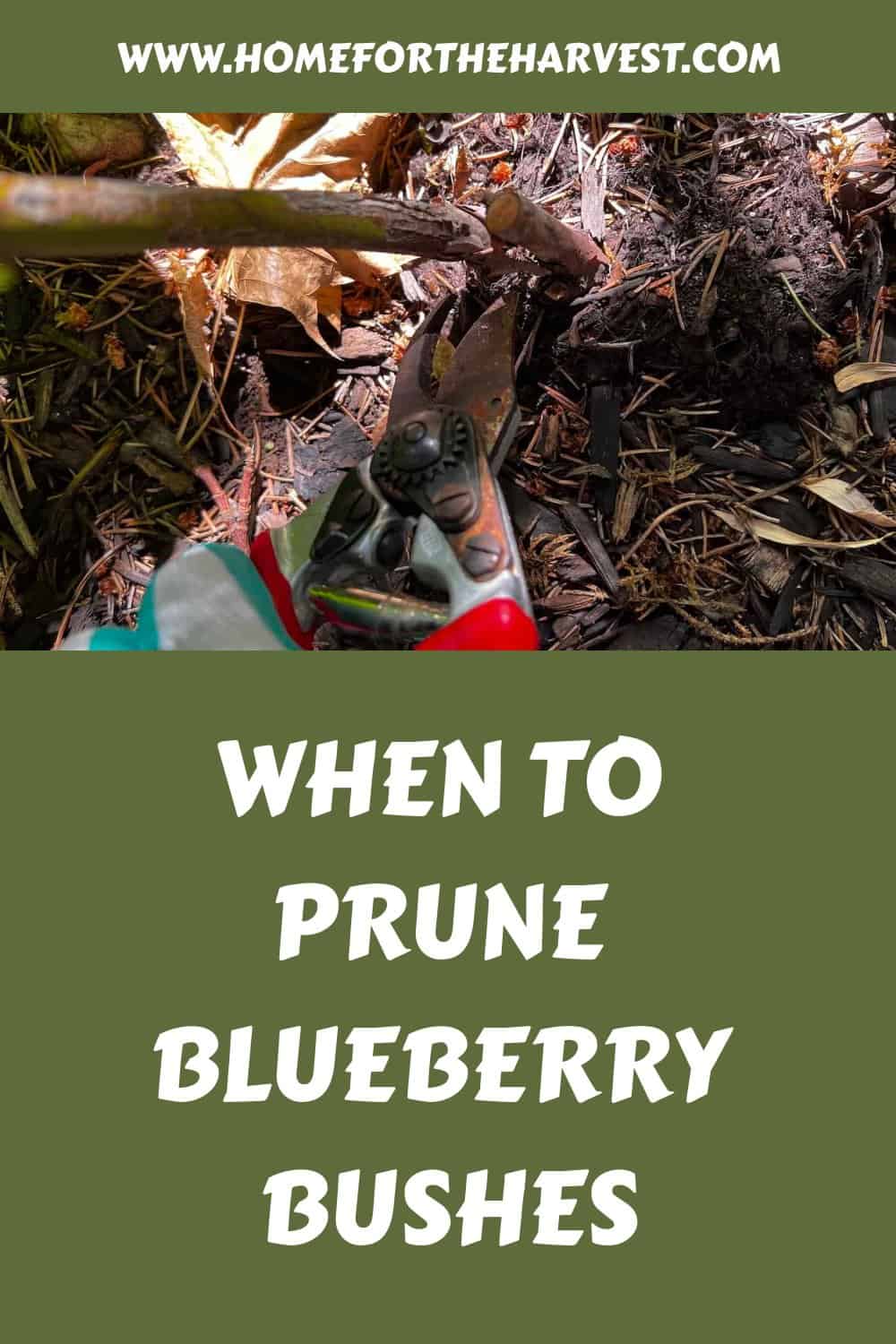Wondering when to prune blueberry bushes?
The best time to prune blueberry bushes is in late winter. Established blueberry bushes can also be pruned in early spring. This annual pruning typically starts about three years after planting. Young plants do not need to be pruned annually. That said, always remove stems or branches that are dead, damaged, or diseased as soon as they are observed (no matter what time of year).
Read on to learn all about when to prune blueberries!
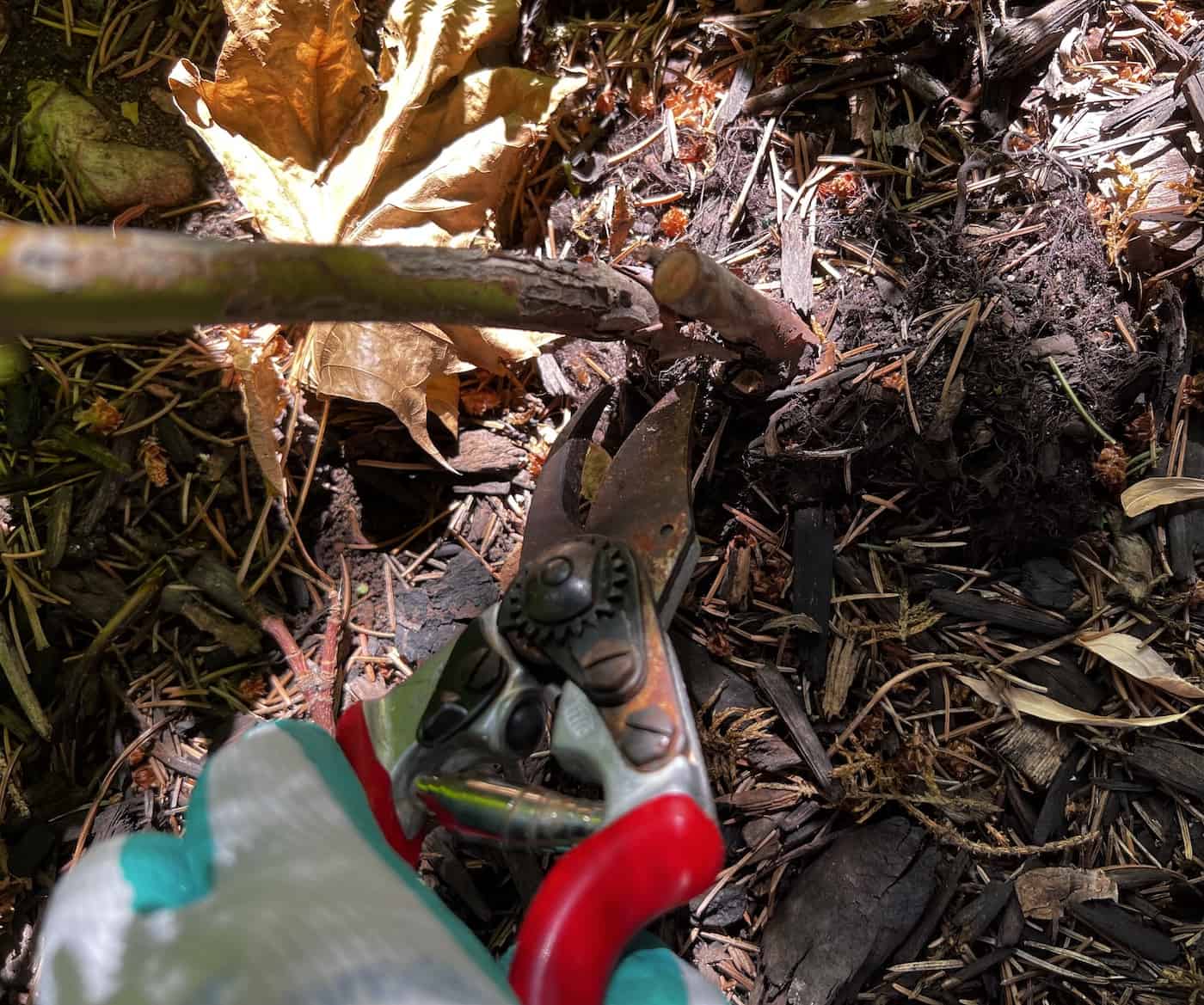
The basics of when to prune blueberry bushes
Blueberry bushes are typically pruned in late winter or early spring. At this time of year, the plants are dormant and not actively growing. It’s also easy to see the plant’s branch structure as the leaves have fallen and not yet grown back in the spring.
You can remove dead and diseased branches as well as old canes that are no longer productive. This is also a great time to thin out the base of the plant by removing crossing stems or branches growing inwards. Here are detailed instructions about how to prune blueberry bushes.
Blueberry stem and branch growth cycle
Pruning blueberries each year is optional, but it usually greatly increases fruit production. This is because blueberries grow their fruit buds on one-year-old wood. Each stem will produce new fruiting branches for about five years after sprouting from the ground. Stems that are over six years old typically do not produce many berries at all.
Each stem is fruitful for about five years. For this reason, annual pruning is avoided until the plants are about 5-6 years old. Since most blueberry bushes are sold as 1 or 2-year-old plants, most growers let their shrubs grow for about 3 years with no annual pruning beyond removing dead or diseased wood.
Annual pruning begins once the oldest stems are approaching 5-6 years old. This annual pruning should be done on the offseason while the plant is dormant and not actively growing. This is typically in late winter or early spring.
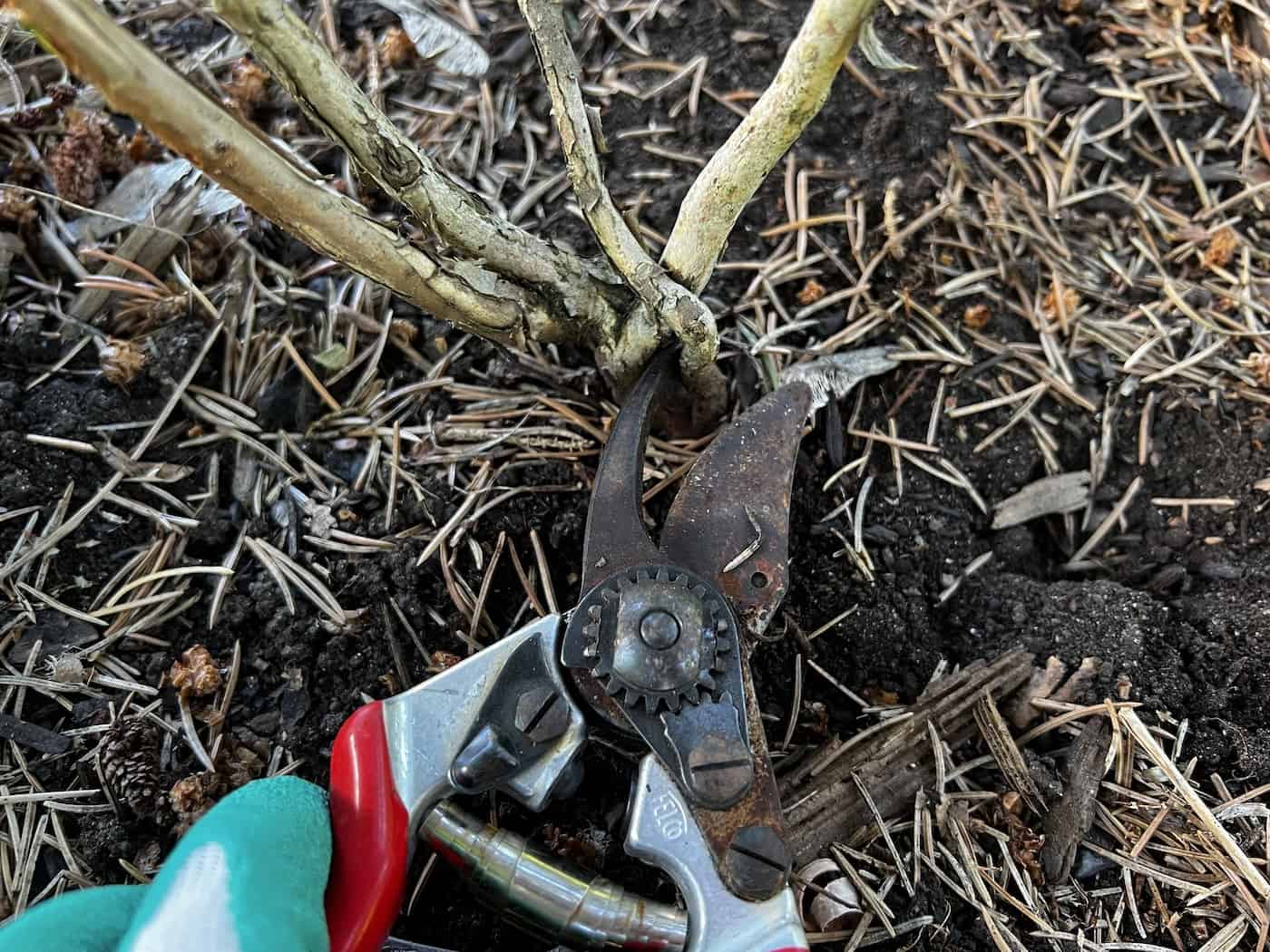
Dormant blueberry pruning in late winter
Blueberry bushes are best pruned once a year while the shrubs are dormant and not actively growing. Winter dormancy allows the plant to rest before the next growing season begins in the spring. This period of rest is the ideal time in which to complete light pruning, maintenance pruning, or renewal pruning.
The pruning process stimulates cane growth by removing the oldest canes. You can also take the opportunity to trim back leggy growth so that the remaining fruit will be high quality. Removing dead wood and crowded branches in the center of the plant also helps with air circulation and to give the shrub a desired open shape.
Winter injury in cold climates
Blueberries growing in cold climates with freezing winters may experience damaged branches or entire damaged stems after inclement weather. Remove these branches as soon as possible to avoid further damage to the plant.
These bushes may also lose branches to temperature extremes, with some branches from the previous season not surviving to the next. This type of damage may not be apparent in late winter or early spring and may only become noticeable in late spring. If this is the case, simply cut off the dead portion back into fresh healthy wood as soon as practicable. Proper pruning of a blueberry plant is key to maximum fruit production.
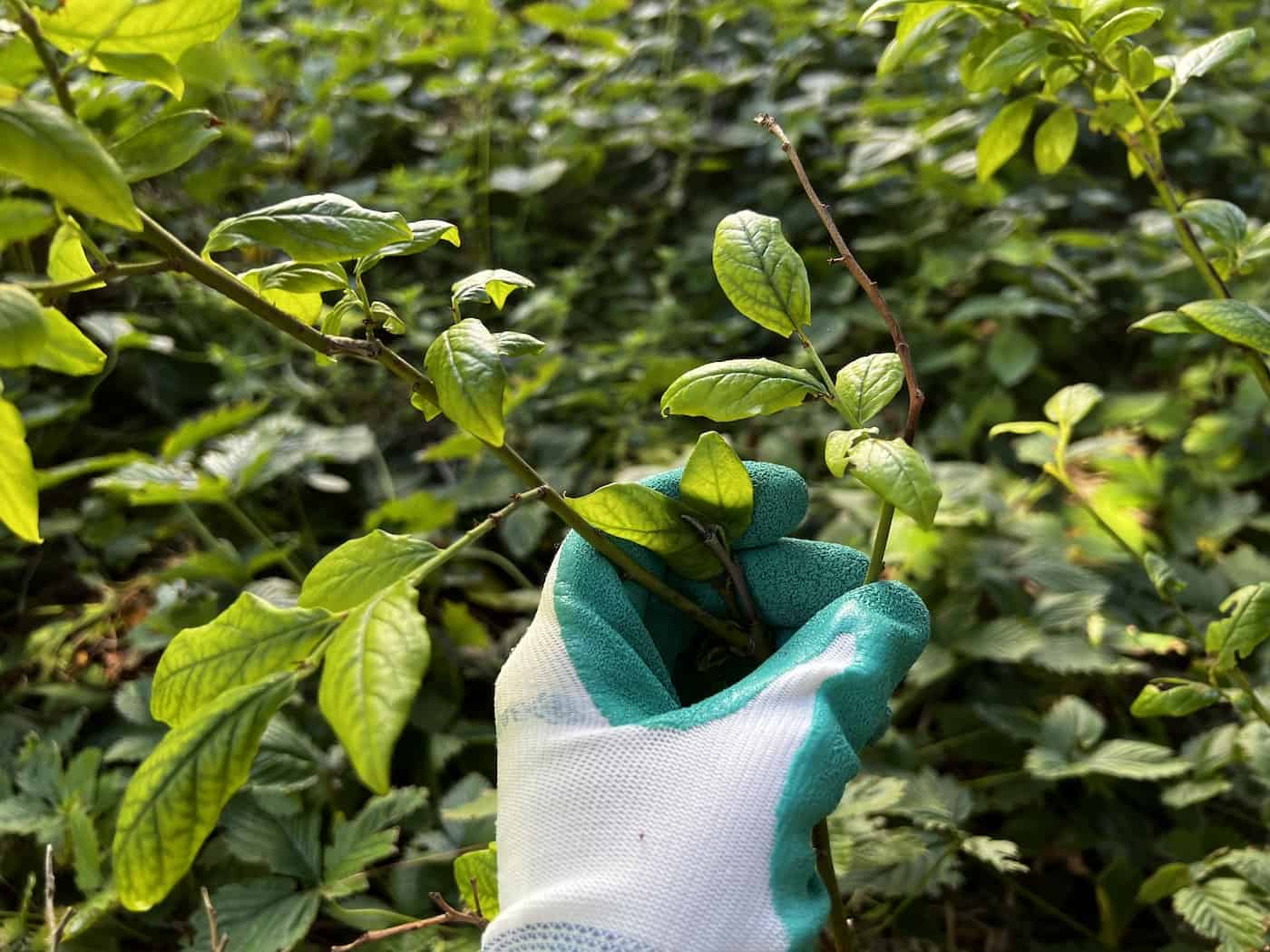
When to remove dead, damaged, or diseased wood?
While significant annual pruning should be scheduled for late winter, removal of dead, damaged, or diseased wood can and should happen throughout the year. Branches that are dead, damaged, or potentially diseased should be trimmed off and removed from the area as soon as they are observed. This routine maintenance is part of maintaining a healthy plant that produces high-quality fruit.
Even young blueberry bushes, which otherwise don’t receive any pruning, should be regularly inspected for dead, damaged, and diseased branches. Trim the dead wood off completely, making the cut into a healthy stem and removing the dead wood from the garden or berry patch area. This will leave room fo the productive canes to grow new fruiting branches and for brand new canes to sprout.
When to trim off flower buds?
While not strictly necessary, you can also trim off flower buds from blueberry bushes. This process is most common with young plants and mature bushes with weak, leggy growth. Pinching off flower buds from a blueberry bush can help prevent small berries.
Young bushes generally aren’t pruned for the first three years after planting. That said, it can be helpful to pinch off the flower buds or the newly-opened blossoms before they produce berries. Removing the flowers allows the plant to refocus that energy into vegetative growth, helping the plant become established in the landscape more quickly.
Leggy thin branches are also sometimes shortened on mature bushes. If all the fruit is left on the blueberry plants, and there are lots of flower buds, the overall fruit quality can be low (typically with very small berries). To improve quality, some growers shorten thin stems to remove some of the flower buds and let the shoot thicken up.
Start by identifying and pruning young shoots that are thinner than about 1/4″ where the flower buds are set. Trim off the end of the stem and branches where the tip is thinner than 1/4″, cutting the branch back to a set of healthy buds or branches. Leaving five sets of buds per branch is a good rule of thumb when trimming back blueberry branches on cultivars with lots of blossoms.


